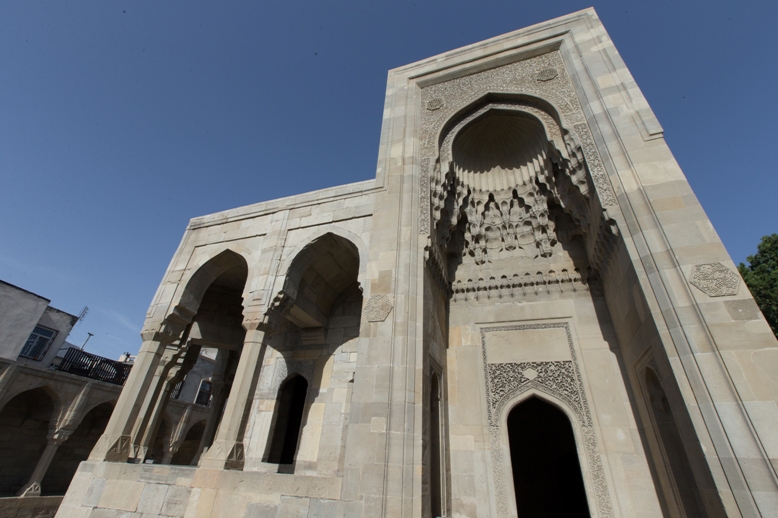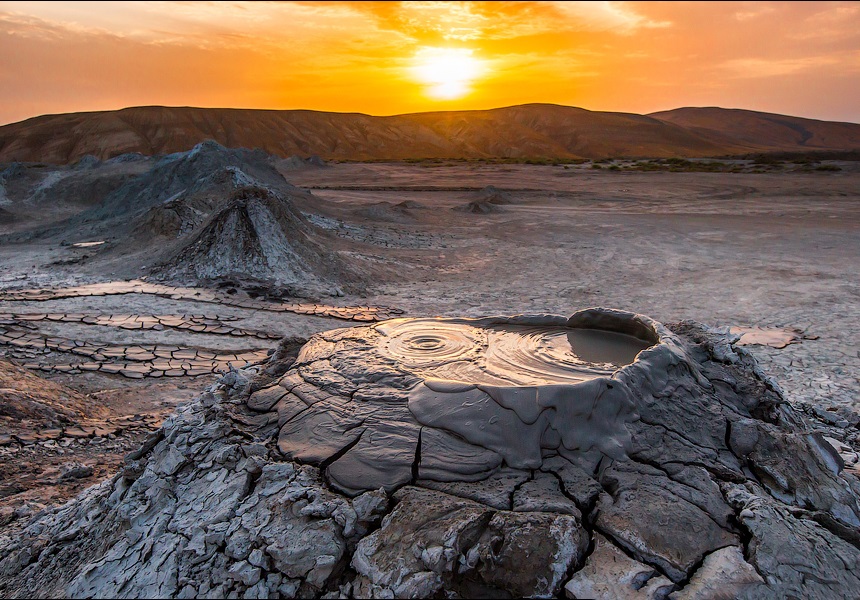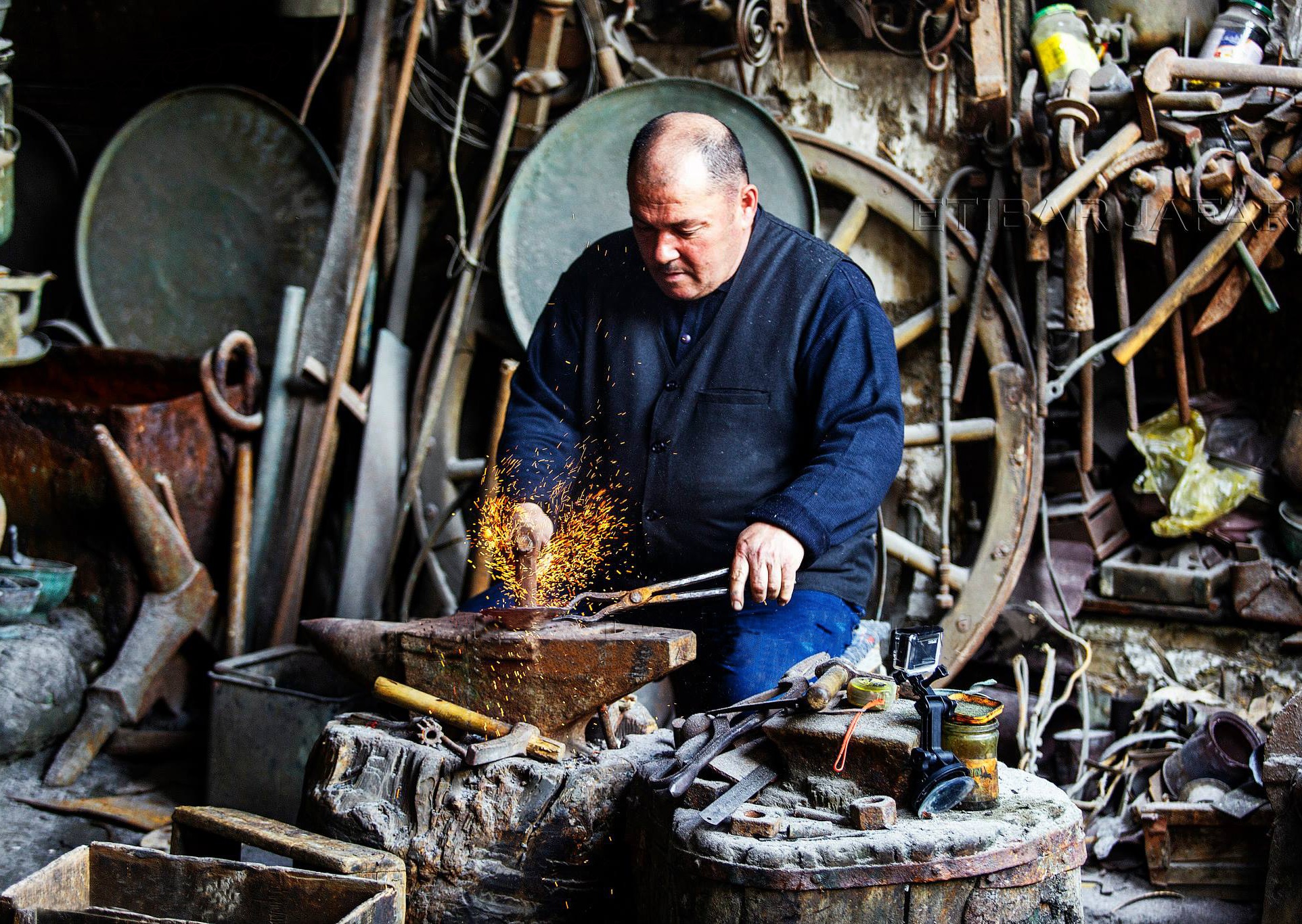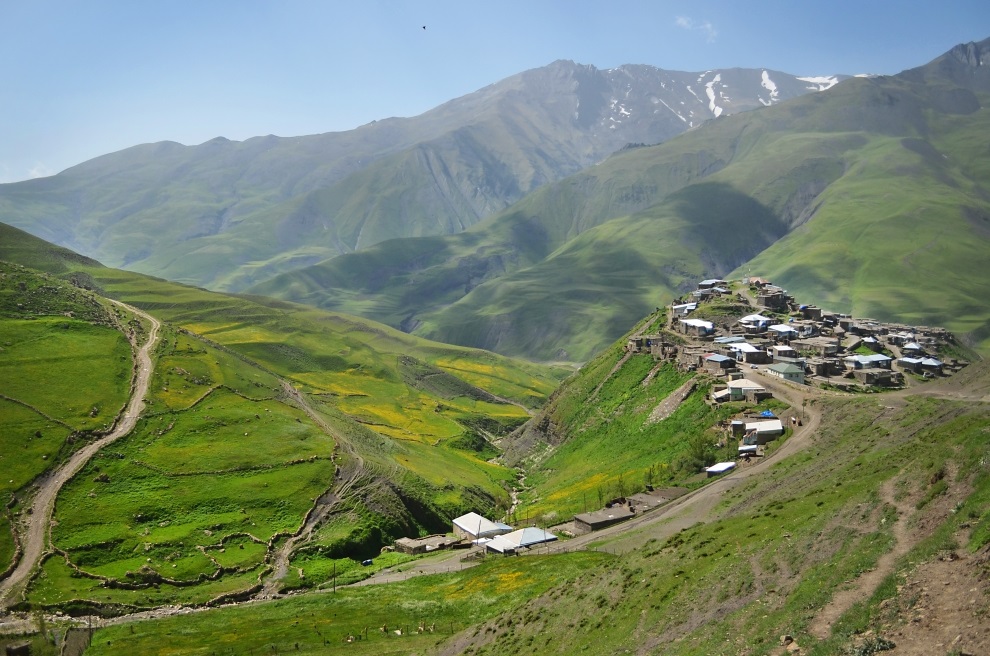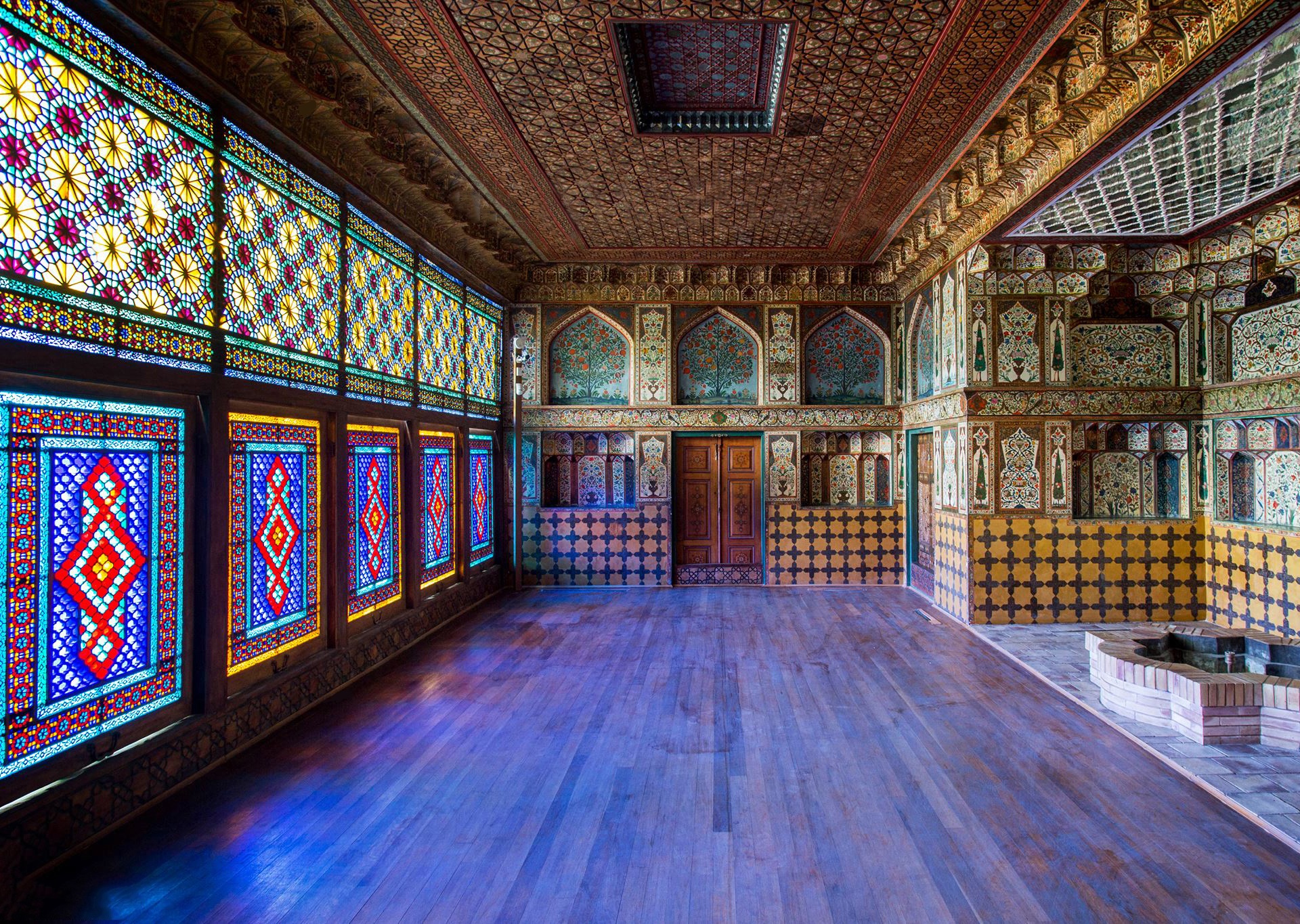Azerbaijan 10 Days
Map
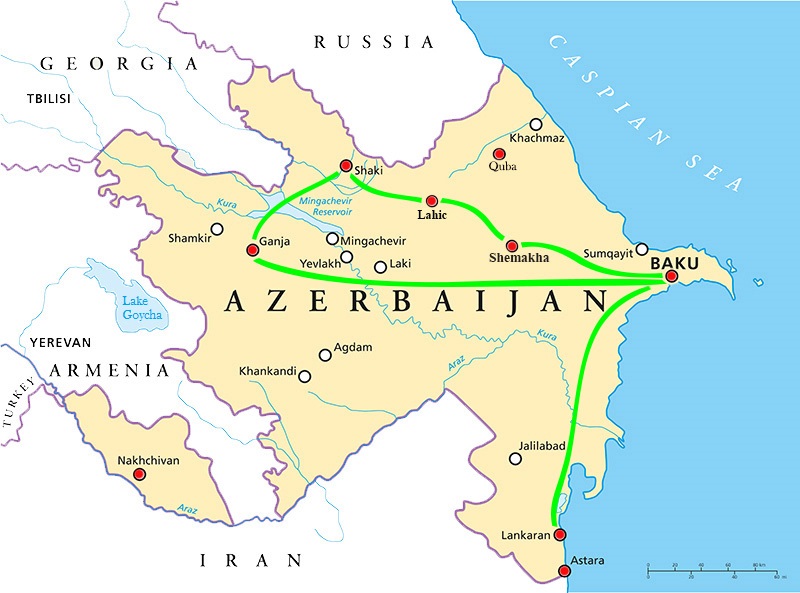
Itineraries
Day 1: Arrival
Arrival to Baku. Transfer to the hotel.
Baku is the capital and largest city of Azerbaijan, as well as the largest city on the Caspian Sea and of the Caucasus region. It is a large scientific, cultural and industrial center. It was first mentioned in the Book of the Dead by the Egyptian Pharaoh Minesan in 3,500 BC. The ancient age of Baku is also evidenced by stone carvings dating back to 12,000 years ago and archeological excavations.
Overnight in Baku
Day 2: Baku
After breakfast, visit Martyrs’ Alley, located on the higher slopes of the city's west-end; this is the best place for
panorama view of the city and the Bay of Baku. Then your guided walking tour of Baku includes the medieval walled city "lcheri Sheher" with it is narrow alleyways, historic caravanserais, mosques and Palace of the Shirvan Shahs, UNESCO Heritage site. Visit the Maiden's Tower, UNESCO Heritage site the imposing mansions of the oil barons, built in the oil boom of 1870-1914 and Martyr's with its superb views over the Bay of Baku.
Complex of Shirvanshahs Palace was the last residence of the rulers of Shirvan State with rich history. At mediaeval times this state was the most powerful state in Azerbaijan. The Shirvanshahs Palace is a two-storey building in an irregular, rectangular shape. In order to provide better illumination of the palace, the south-eastern part of the building was constructed on different levels.
Then you will enjoy excursion to the Absheron Peninsula, visiting the Ateshgah (or place of fire) a Zoroastrian Fire Temple and Yanar Dag. The Temple of Eternal Fire - Ateshgah - is an authentic Azerbaijani exotic. This territory is known for such unique natural phenomenon as burning natural gas outlets (underground gas coming onto surface contacts oxygen and lights up). Yanar Dag is located 25 km to the north from Baku, in Mehemmedi village. From the year 2007 Yanar Dag is declared a state-protected conservation area. During the Absheron tour you will see Quadranqular Tower, one of the ancient Absheron towers located in Mardakan village.
Overnight in Baku
Day 3: Baku – Shemakha – Lahij, 190 km
In the morning we will depart Baku and drive to Sheki.
On the way from Baku to Shamakhi there is Maraza village known for its unique monument - two-storied mausoleum-mosque of the 15th century called Diri-Baba, located across from the old cemetery. For a long time the local residents have kept the legend that there imperishable Saint Diri-Baba had been buried there.
Continue to Shamakha you will have a sightseeing of historical Juma Mosque (10th century, reconstructed in the 19 th century), numerous ruins of the 10 th – 17 th centuries and Yeddi Gumbez Mausoleum.
Drive through Girdimanchay River’s canyon to visit Lahij, the 5th century place rich in its historic and architectural values. Lahij is an ancient village with charming eye-catching sidewalks inlaid by stones. It is famous for medieval water supply and sewage systems as well as traditional workshops making jewelry, copperware, carpets, pottery, daggers, and iron tools.
*Trip to Lahij is subject of weather conditions.
Overnight in Lahij.
Day 4: Lahij – Sheki
In the morning we will leave Lahij for Sheki. On the way we will stop in Gabala to see the church of local Christian minority of udins in Nidj village.
Upon arrival in Sheki visit the Sheki Khan Palace. The unique beauty two-storied building of the palace amazes with its magnificent interior and exterior. The facade of the palace is richly painted with anecdotal drawings displaying scenes of hunting and war as well as intricate geometrical and vegetative patterns. In the center is a huge stained-glass window from a multi-colored glass mosaic (It is remarkable up to 5,000 glass pieces were used per one square meter). Other smaller windows of the palace are also made of pieces of colored glass and covered with openwork stone lattices.
The basic material for the Palace construction was raw bricks, river stones, plane trees and oaks. The most amazing is that not a single nail or glue drop was used for the construction! Everything is in place due to a special solution the formula of which was lost forever.
Also we will visit Carvanserai of 18th century in Sheki. Then drive into the countryside to the village of Kish with the oldest church in the Caucasus dating from the first century and enjoy a walk in the surrounding Caucasus foothills. Overnight in Sheki.
Day 5: Sheki – Ganja, 150 km
This morning we will visit local Sheki bazar.
Leave Sheki, for Ganja. Ganja is the second biggest city of Azerbaijan with more than a million populations. Ganja is the birthplace of the great Azerbaijani poet Nizami Ganjavi who made the invaluable contribution to the history of not only Azerbaijani literature but also the world literature. Nizami Ganjevi was born in Ganja in 1141. He was one of the most educated people of the time. Today we will visit the 17th century Shah Abbas Mosque, Javadkhan Mousaleum (XIX century), the Orthodox church ( 1815),Nizami Mousaleum and the "Bottle House", local icon in Ganja decorated with 50,000 glass bottles.
Visit Imamzade Mosque. Free time in Ganja.
Overnight in Ganja.
Day 6: Ganja – Baku, 360 km
In the morning, leave Ganja and drive to Baku. On the way Baku, we will visit the Museum of Petroglyphs another name of which is Gobustan - a mountainous place in the southeast of the Major Caucasian ridge located 60 km from Baku. There are thousands of rock paintings from the early Stone Age depicting hunting scenes, animals, people and ships as well as graffiti left by Alexander the Great's army and Roman legionnaires. In 2007 Gobustan was declared a UNESCO World Heritage Site.
Arrival to Baku.
Overnight in Baku.
Day 7: Baku – Lankaran, 300 km
In the morning, check-out at the hotel and drive to Lankaran. En-route to Lankaran, we will visit one of the main attractions in Salyan, Shirvan National Park, created in 2003 out of a nature reserve that has existed here since 1969. It covers the territory of 55 hectares and was founded to preserve the local flora and fauna, especially gazelles listed in the Red Book. Besides gazelles, there are 34 species of birds in the reserve, 14 of which are listed in the Red Book. After visiting the Shirvan National Park we will continue our tour in Lankaran.
Lankaran is a subtropical paradise and resort. It is located in the southeast of Azerbaijan practically on the border with Iran. In the east the city is washed by the waters of the Caspian Sea. The nature of Lankaran harmoniously combines high mountain tops, fertile lowlands and pebbly sea coasts. Visit a local family to learn about the customs and traditions of the Talysh people in Lankaran. Later, enjoy the excursion of the tea plantation and have tea-ceremony here.
Overnight in Lankaran.
Day 8: Lankaran – Baku, 300 km
Today you will depart with your driver and guide for Baku. Before the departure to Baku, we will drive to Astara. Here we will visit Yanar Bulaq. Yanar bulaq (Burning water) is fire phenomenon in Astara. Yanar Bulag or the 'burning spring' is located in the city of Astara in southern Azerbaijan. It consists of a metal stand pipe inside a small pavilion through which water comes gurgling out. It looks nothing unusual, but when you light a match and touch the water, the water itself is set ablaze. This occurs due to the water's high methane content. The locals believe the water from the spring has remedial properties, and would often take a drink while the flame is alight.
Overnight in Baku.
Day 9: Baku
In the morning visit Heydar Aliyev Cultural Center.
Heydar Aliyev Center is a cultural center, projected as a complex structure that includes the auditorium (convention center), a museum, exhibition halls, administrative offices. The project of the center was designed by the winner of Pritzker prize and internationally recognized architect Zaha Hadid.
*Heydar Aliyev Cultural Center is closed on Mondays.
Then we will visit Villa Petrolea, the House Museum of Nobel brothers.
Free time.
Overnight at the hotel in Baku.
Day 10: Departure
Meet your driver for the transfer to the airport. Departure.










